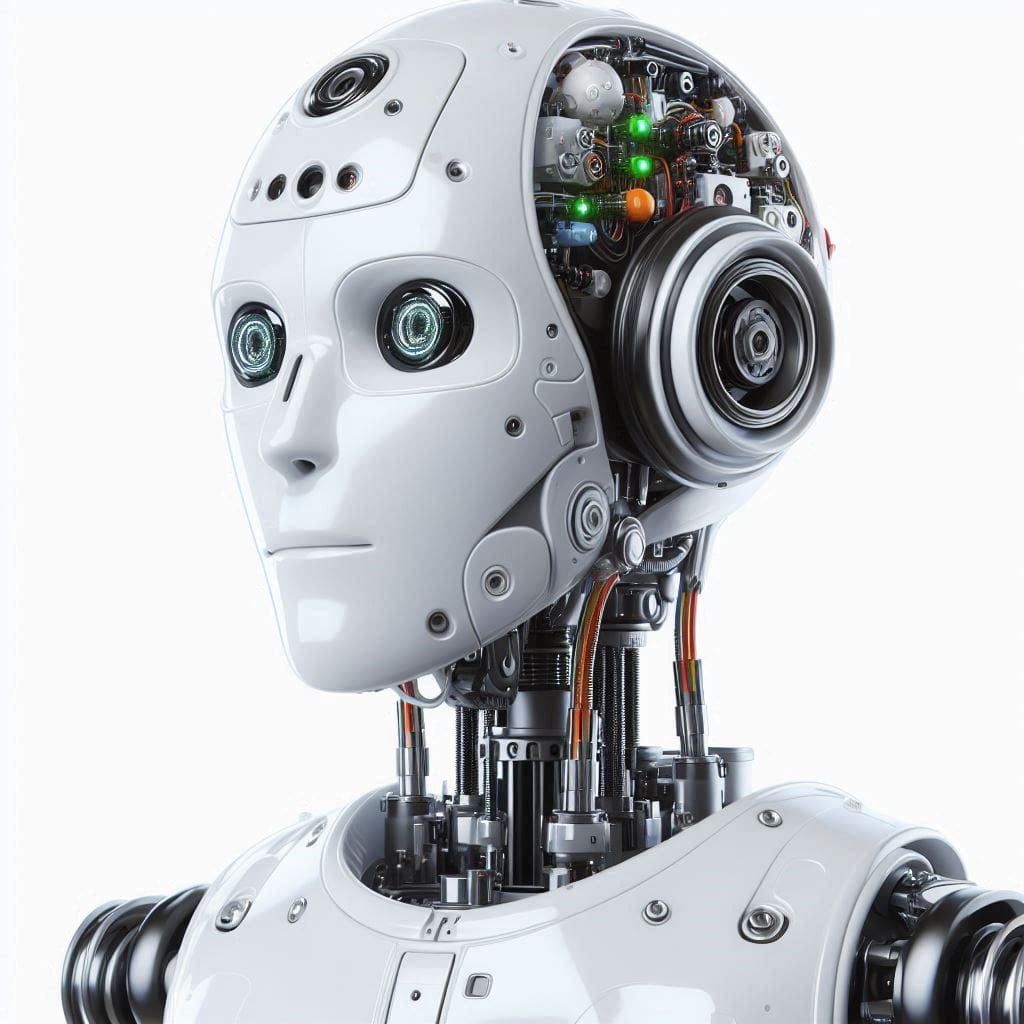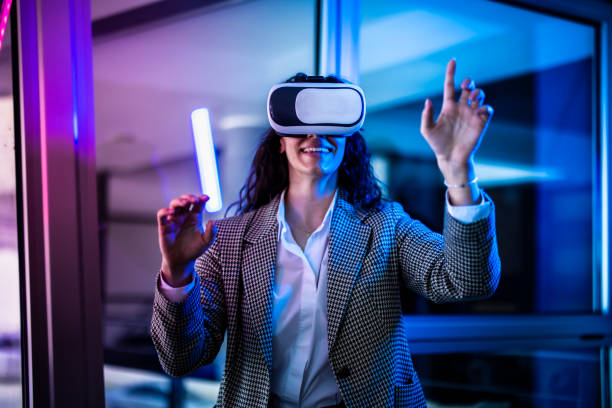It doesn’t whisper your name or knock on your door. It doesn’t arrive with fanfare or wear a metallic face. Artificial Intelligence enters your life like a quiet breeze through an open window—soft, unnoticed, and everywhere. It’s in your search results, your social feed, your maps, your music. Every scroll, every click, every “like” is a stroke on the canvas of your mind. And day by day, AI—this unseen architect—is quietly shaping how you think.
Not with brute force. Not with malice. But with precision. With design. With billions of tiny calculations that gently tilt your attention, your preferences, even your beliefs. Artificial Intelligence doesn’t just learn from you. Increasingly, it teaches you how to learn, what to notice, and what to ignore.
The revolution is not coming. It’s already here. And the most remarkable part? You rarely feel it happening.
Learning You Like a Mirror
Artificial Intelligence is not just some abstraction in a research lab or a robot on an assembly line. It’s in your pocket, listening to the rhythms of your life with a quiet, tireless patience. From the moment you pick up your smartphone, AI begins its work. It watches your patterns, tracks your swipes, and remembers what makes you pause.
When you search Google, the ranking of results isn’t objective—it’s the output of complex learning systems trained on billions of prior searches. When you open YouTube or Netflix, the recommendations you see have been fine-tuned by deep neural networks that track your behavior down to the second. When you log in to Facebook or TikTok, the algorithm doesn’t just reflect your interests—it steers them.
You might think, “But I choose what I watch, read, and click.” And yes, you do—within a universe that has been increasingly narrowed by the things AI has learned about you. You live in a dynamic mirror, one that reflects you, but also changes you in return.
The Algorithm’s Gentle Hand
At the heart of AI’s quiet influence lies a discipline called machine learning—a method where algorithms learn patterns from data without being explicitly programmed. But this learning isn’t passive. As AI collects data about what grabs your attention, it doesn’t just sit on the sidelines. It starts predicting what else might interest you. Then it begins suggesting. Recommending. Nudging.
Each nudge might seem harmless. One more video, one more post, one more ad tailored so precisely it feels like fate. But these nudges accumulate. The recommendations you accept begin to mold your mental landscape. Your worldview, once vast and flexible, can start to settle into grooves carved not by reasoned reflection but by automated pattern recognition.
You begin to think in the language of the feed. You look for answers in 280-character tweets. You crave certainty in a world of gray. And you don’t even realize it’s happening.
Because it feels natural. Seamless. Comfortable.
And that is the genius—and danger—of AI.
The Architecture of Attention
Your attention is the currency of the digital age. Companies no longer just sell products. They sell your attention to advertisers, and AI is the broker making it all possible. Every platform you use—from Instagram to Amazon—is engineered to hold you longer, to predict what will keep you scrolling just a few seconds more.
These predictions aren’t made by cold logic alone. They tap into the deep architecture of the human brain—our desires, fears, biases, and emotional triggers. AI doesn’t understand you like a friend. It understands you like a casino—calculating odds, testing responses, and optimizing for addiction.
You’ve probably felt it. That compulsive need to check your phone. The inexplicable urge to scroll, even when nothing feels satisfying. The rabbit holes you fall into, chasing headlines or outrage or influencers who say just what you needed—or wanted—to hear.
This is not accidental. It’s engineered. And it’s working.
The algorithms don’t just follow your attention. They train it. They shape your neural pathways, reinforcing habits and expectations until your brain adapts. Until what once felt optional now feels inevitable.
Beliefs by Design
Perhaps the most profound way AI shapes how you think isn’t just about what you watch or click—but what you believe.
Recommendation engines, especially on platforms like YouTube, Facebook, and TikTok, don’t distinguish between entertainment and ideology. Their goal isn’t truth—it’s engagement. If an incendiary or misleading video keeps people watching, the algorithm promotes it. If a conspiracy theory leads to more shares, it spreads.
Over time, these systems can trap users in echo chambers—digital environments where they are primarily exposed to ideas and perspectives that confirm their existing beliefs. The more time you spend in that loop, the more your views calcify, your tolerance for dissent erodes, and your world narrows.
It’s not that AI sets out to radicalize people. But it optimizes for attention. And often, the most engaging content is the most extreme.
This isn’t science fiction. It’s documented reality. Studies show that prolonged exposure to algorithmic recommendations can polarize beliefs, reinforce misinformation, and even shift moral judgments.
And it often happens without users realizing they’ve changed.
Memory, Rewired
Artificial Intelligence is changing not only what you see and believe but also how you remember.
Decades ago, remembering facts, dates, and trivia was a mark of intelligence. Today, with AI-powered assistants like Siri, Google, and ChatGPT, information is just a question away. Why memorize what you can retrieve instantly?
This shift isn’t inherently bad—it can free the mind for deeper thinking. But there’s a catch.
When we offload memory to machines, we may lose not just facts but the connections between them. Human memory is more than storage—it’s a web of associations. It’s how we form insights, connect patterns, and understand context. The more we rely on external tools, the less we exercise these mental muscles.
Studies suggest that easy access to AI-generated answers can lead to a phenomenon called “cognitive offloading”—a reliance on technology that reduces our motivation to remember or think critically.
AI gives us answers. But the danger is that we may stop asking questions.
Emotional Contours in Machine Light
AI doesn’t just deal in logic—it increasingly shapes your emotions.
Spotify uses machine learning to detect your musical moods and suggests playlists that reinforce them. Instagram’s algorithms prioritize posts that evoke strong reactions—joy, outrage, desire, envy. Chatbots like Replika simulate companionship, offering emotional validation without judgment.
This emotional shaping isn’t benign. It means that your feelings, too, are being curated, mirrored, and manipulated.
When your feed is filled with beauty, you may feel inadequate. When it’s filled with anger, you may feel afraid. When it’s filled with affirmation, you may grow dependent.
Emotion is no longer a private affair. It’s data. It’s profit. It’s a signal to optimize.
And as AI grows more advanced—learning not just what you say but how you say it, what your face looks like when you’re sad, what your heart rate does when you’re excited—this emotional entanglement will only deepen.
Creativity at the Edge of the Machine
What about imagination? What about originality? Surely those are safe from AI’s quiet reach.
Not anymore.
Generative AI systems like GPT-4, Midjourney, and Sora now write poetry, paint landscapes, compose music, and simulate film. These aren’t just imitations—they are creative outputs shaped by patterns in data, often indistinguishable from human-made work.
When you use AI to help you brainstorm, write, or create, it feels like collaboration. And sometimes it is. But it also shifts your expectations. It shapes your style. It nudges your imagination toward paths already paved by past data.
Over time, you may find yourself thinking less like an individual and more like the average of everyone else.
You may begin to confuse fluency with depth, novelty with insight, and beauty with algorithmic perfection.
AI won’t destroy human creativity. But it will change it. And the change is already here.
The Illusion of Control
One of the most subtle dangers of AI’s influence is the illusion of autonomy. You feel in control. You make the final choice. You close the app when you want to.
But behavioral science tells a different story.
When options are framed in specific ways—when defaults are preselected, when certain choices are repeated, when feedback is timed just right—your decisions become predictably irrational. This is the realm of “nudging,” a concept made famous by behavioral economists but now embedded deep within AI systems.
Every color, every sound, every microinteraction is engineered to influence behavior. AI doesn’t just observe your decisions. It orchestrates them.
And because it feels like you’re choosing freely, you rarely resist.
This isn’t mind control. It’s mind guidance. It’s the gentle pressure of billions of data points pushing your thoughts in directions you might never have gone on your own.
Hope in the Machine
Yet, amidst this quiet manipulation, there is room for hope. AI is not inherently sinister. It is a mirror and a tool. And like all tools, its impact depends on how—and why—we use it.
AI can help you think more clearly, if you ask the right questions. It can challenge your biases, if you invite it to. It can broaden your world, if you seek diverse sources and perspectives.
AI can teach children to code, give doctors insights from oceans of data, translate languages in real time, and help disabled individuals navigate the world with dignity. It can write lullabies, compose symphonies, and simulate galaxies. It can save lives.
But to harness its potential without surrendering your mind, you must stay awake. You must remember that every click is a signal, every pause a message, every choice a piece of a larger mosaic.
You must cultivate awareness, the most human quality of all.
A New Literacy
The future demands a new kind of literacy—not just reading and writing, but understanding how machines think, how data flows, how influence works.
You need to learn not just how to use AI, but how AI is using you.
This means questioning what appears in your feed. It means pausing before you share. It means recognizing when your thoughts feel unfamiliar and asking why. It means teaching your children that just because something is recommended doesn’t mean it’s right.
And it means designing systems that reflect human values—transparency, fairness, empathy—not just efficiency and profit.
The Mind Unbound
Artificial Intelligence will not replace you. But it will reshape you.
The question is not whether AI will influence how you think. It already does.
The real question is: How will you respond?
Will you drift through digital waters, letting the current decide your destination? Or will you seize the wheel, chart your own course, and think with renewed awareness, depth, and courage?
The human mind is still the most powerful intelligence we know. And it is still capable of astonishing insight, resilience, and grace.
In the end, AI may guide your thoughts—but it cannot own them.
Unless you let it.






